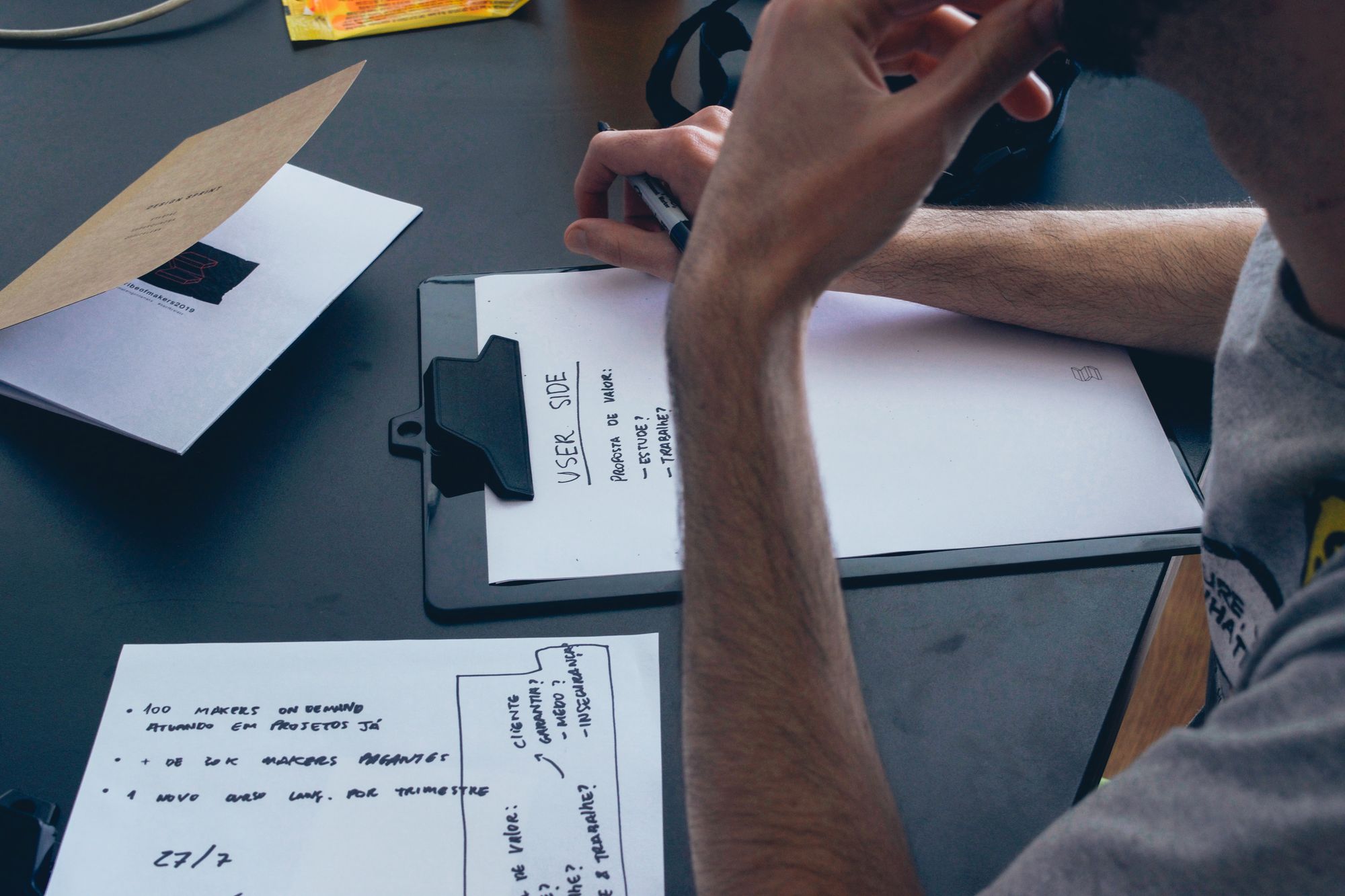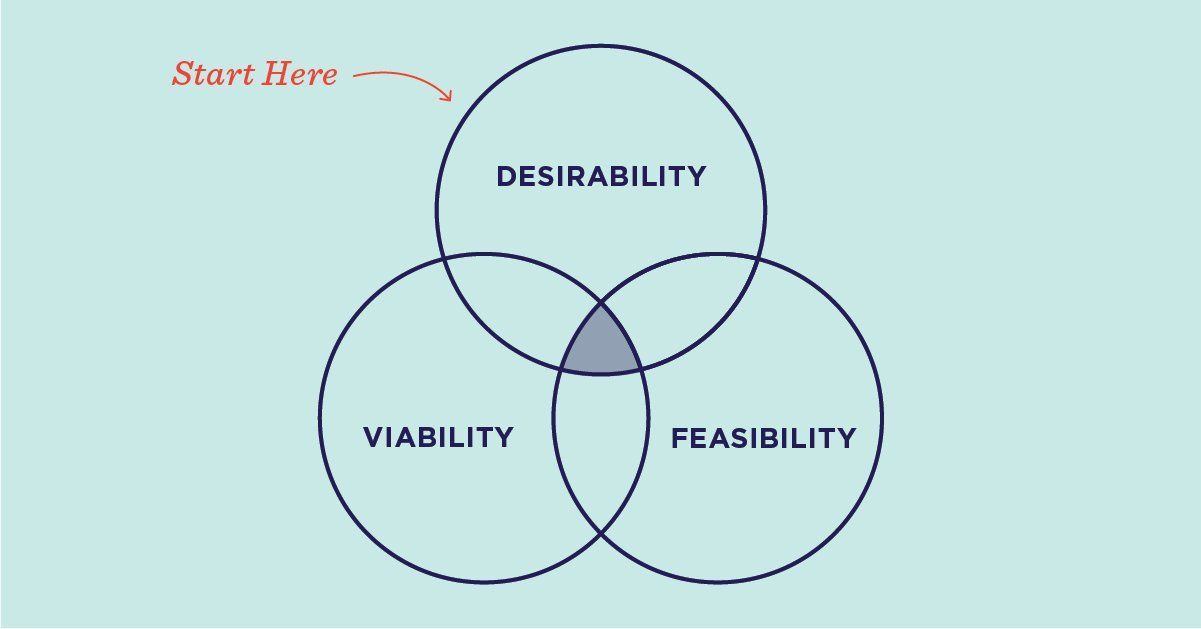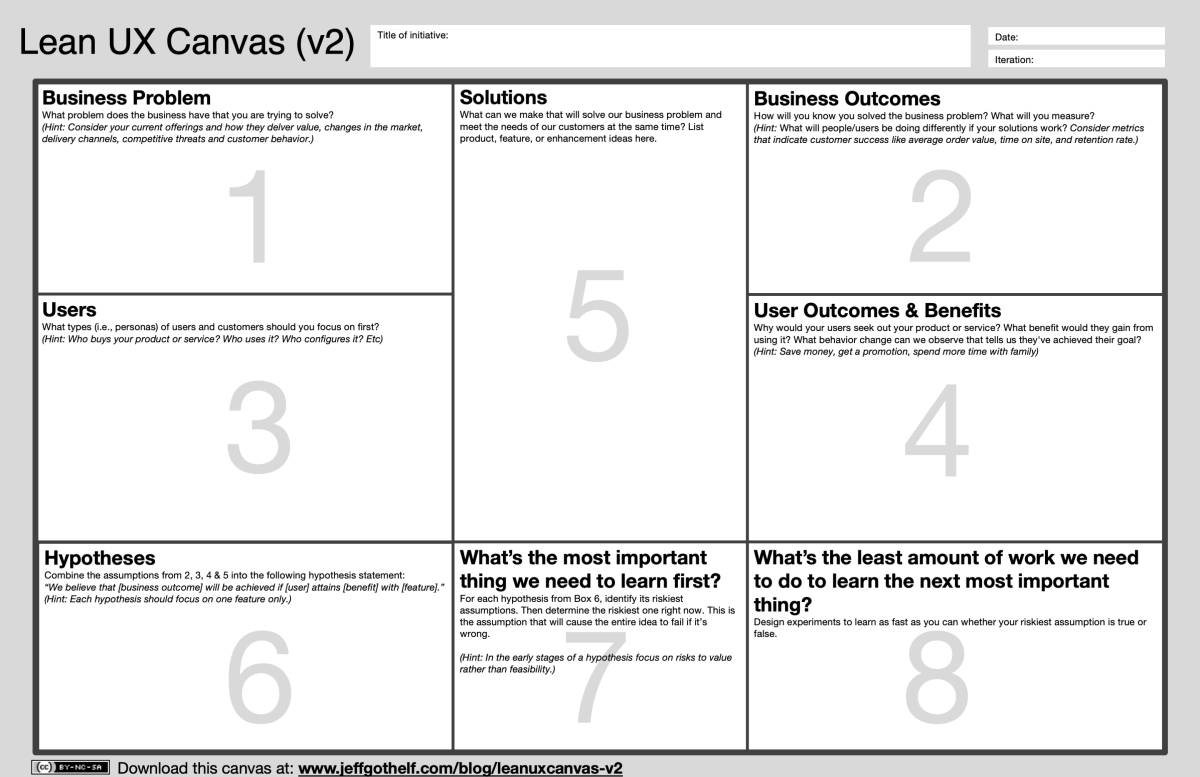A guide to UX strategy

Designers know they need a user experience strategy, but startup founders and product owners might not. Or, they know they need one but don’t have the slightest clue what creating one entails. The good news is that they actually know more than they think.
User experience strategy is fundamentally a business strategy. It’s about deep customer empathy, delivering measurable value, and de-risking your investment through testing, learning, and iteration. In this guide, we’ll teach you what you need to know to take your UX design strategy from idea to launch.

Skip to section:
Where does UX strategy fit in the design process?
What are the core elements of UX strategy?
Why you should revisit your UX strategy
What is UX strategy?
UX strategy aligns your product development team’s functional vision, business goals, and technical know-how around the needs and values of the customer. A UX strategy can apply to a single digital product or project focus but is perhaps better thought of as a methodology to how your team will generate, develop, and validate all of its new ideas.
According to McKinsey’s award-winning series on the value of design, “companies that excel at design grow revenues and shareholder returns at nearly twice the rate of their industry peers.” In the words of former IBM chief executive Thomas J. Watson Jr., “good design is good business.”
Where does UX strategy fit in the design process?
UX strategy drives the product design process, determining the why, what, and how of what your team decides to build and test. The creation of a UX strategy is often thought of as “Discovery,” part of the upfront planning stages, but it actually plays a significant role in execution.
The Double Diamond design model is a framework that breaks UX strategy into two phases: problem-finding and problem-solving. It’s a useful way of illustrating UX strategy in action:
- In the first diamond, you’re focused on divergent thinking: Surveying the market landscape for opportunities and exploring blue-sky “what if” ideation. For example, here is where you’d work out your customer personas and offering’s value proposition.
- In the second diamond, your thinking becomes convergent as you zoom in on “how might we ...” possibilities and forming hypotheses to test your ideas. This phase is all about loops of creating prototypes and iteration based on feedback.

The Double Diamond framework was developed by the Design Council between 2002-2004
The Double Diamond model can help your team organize the design activities and collaborations that comprise a UX strategy. Here’s what that typically involves.
What are the core elements of UX strategy?
There are six core elements of UX strategy:
- Conducting user research to generate real-world insights from a variety of sources that might include behavioral data from your existing user experience; interviews, focus groups, co-creation; and, of course, feedback from user testing activities. User research shapes and refines your core customer personas and should be an ongoing part of your design process.
- Doing competitive research and marketing positioning that involves an evaluation of your competitor landscape, a review of market and industry trends, and a focus on your customer segments. It anchors your business model in a context and helps to set benchmarks of user experience, design, and brand affinity.
- Creating a value proposition that describes how the value you hope to deliver connects to your customer’s values. It establishes how you will achieve product-market fit, or in other words, how your product will uniquely and specifically help customers achieve their goals.
- Establishing outcomes and metrics that set specific targets for measuring your offering’s market performance. They should outline what you want to achieve and how you’ll know if and when you have, with breakdowns that align business goals with customer benefits.
- Defining the Minimum Viable Product (MVP) features and priorities, which, according to Lean Startup creator Eric Ries is a version of a new product which allows a team to collect the maximum amount of validated learnings about customers with the least effort.
- Designing a structure for testing key hypotheses about the specific ways your offering’s key features will meet a user need or solve a user problem. This structure outlines what you’ll prototype to learn what you need to keep moving forward or if you need to pivot your approach.
If it seems like UX strategy overlaps with what you’d thought of as product strategy, you’re right. The two are one and the same. User experience is the key to your product’s success. It’s a conversational driver in shaping your overall product strategy and should be held up to the same measures of impact and growth.
Why you need a UX strategy
You need a UX strategy to align your product team around a shared vision that puts the user at the center of your decision-making. Embracing user experience design as a strategic imperative will reveal opportunities that break down barriers between physical and digital brand touchpoints. It will also illuminate areas where design can make a measurable difference to customer acquisition and retention.
A UX strategy will help your team find its innovation sweet spot, that perfect convergence of where an offering meets a core customer need, hits key business objectives, and is delivered with technical acumen. It enables a product team to evaluate each proposed feature and functionality through these three lenses:
- Understanding customer desirability: Do customers need or want this? How will it improve their lives and help them accomplish their goals? Will we be able to reach new customers?
- Evaluating business viability: Is this a sound business decision that’s in line with our overall strategy and positioning? Is it profitable enough?
- Assessing technical feasibility: Can we build this with the resources we have available? Do we have the right skills? Can we deliver at scale?

The Three Lenses of Innovation (Source: IDEO U)
Most importantly, a good UX strategy will give teams problems to solve, not just solutions to implement, keeping them focused on how a business outcome or technical solution tracks to making a material difference in a user’s life.
A UX strategy is also what guides the team forward, providing critical direction on what to build, what to test, and what you need to validate assumptions about whether your solutions are landing in that sweet spot.
How to create a UX strategy
Creating a UX strategy starts with getting a cross-functional, cross-disciplinary team together. At a minimum, you’ll need your UX design lead, your founder/product owner, and your tech and development leads at the table. You’ll also want to solicit inputs from stakeholders who touch any aspect of the customer experience.
Design leaders and co-authors of Lean UX, Jeff Gothelf and Josh Seiden, created a simple eight-part canvas that puts a clear articulation of your strategy on one page. The Lean UX Canvas is an indispensable tool that will guide you and your team through creating a comprehensive and actionable UX strategy step by step.

The Lean UX Canvas is an ideal tool for creating your UX Strategy. (Source: Jeff Gothelf)
- Establish the business problem you’re trying to solve with this new offering. Maybe it’s about creating a value innovation or disrupting an existing paradigm. Key inputs to this section would be a current-state experience audit (if applicable) and insights from your market landscape research.
- Define the corresponding business outcomes you expect to achieve and how you’ll measure their impact. You’re going to want to put some hard numbers here; think in terms of rates and ratios that show how your solution is trending. You should have clear and specific targets for measuring customer satisfaction, usage patterns, engagement, efficiency of conversion, and growth.
- List all of your user persona types. Be comprehensive, including different types of customers, prospects, clients — anyone who might have a unique customer journey or generate specific use cases. Then, prioritize to focus on your main one or two target users. Elaborate these personas into sketches that includes demographic, psychographic, and behavioral characteristics — anything that might be relevant to why and how a customer would engage with your product. This is informed by both segment and customer research.
- Focus on the reasons why a customer would choose your product. The value you deliver must align with what the customers personally care about. Are you making their life easier? More delightful? Saving them time or money? Ongoing testing and research will add insight direct from the target user’s mouth. This section will prove invaluable to crafting your marketing messages and calls to action.
- Brainstorm all of the possible solutions you can come up with for alleviating your customer’s pains and increasing their meaningful gains. This will become a running list of ideas and your backlog of potential features, so expect to revisit it regularly and build ideation sessions into your design process to keep it full and fresh.
- Review all of your assumptions about how customers will benefit from your solutions, and articulate hypotheses for each of them that, when taken together, tell a compelling story about the user experience you hope to create. Each hypothesis should focus on a singular feature. Writing them out is like filling in Mad Libs: “We believe that (business outcome) will be achieved if (customer persona) attains (benefit) with this (feature).”
- Prioritize hypotheses in terms of potential risk versus perceived value. Yes, there’s a canvas for that! Each hypothesis will evaluate risk in a different context — getting customers to adopt a new behavior, implementing a new technology, capturing a new market. This activity will help define what you need to learn first to validate your thinking. As a result, you’ll know what you need to build for your MVP and will also be able to organize your UX design and development workflow.
- Design your experiments in terms of level of effort versus impact. What’s the least amount of work to do in order to learn the most important thing? Try to keep a mindset of aiming for the smallest thing that shows success when you’re plotting out exactly how you’ll test a given hypothesis, e.g., paper or clickable prototypes, A/B tests, or landing page mockups.
You’ll need to keep working through all of your hypotheses on a loop of prioritization and experiment design. This will help you shape a plan for how you’ll flesh out your ideas into designs that you can put in front of users. Short one- or two-week design sprints are a great approach for rapidly moving from ideation to prototyping to testing, and they are especially effective at maintaining a cadence of regular interactions with your customers.
Why you should revisit your UX strategy
Your UX strategy is not a set-it-and-forget-it plan or document that will collect dust in slide deck purgatory. It’s a living reference that needs continuous review and adjustment as you test and validate each hypothesis, iterating your way forward in your product roadmap.
For startup founders and product owners, a UX strategy ensures that the risks of innovation are mitigated with a smart and tactical approach that limits the scale of failures and creates endless learning opportunities. In addition, it keeps your product team focused on creating something of value that not only stands as a competitive advantage but in the hearts and minds of customers, as well.
Looking for the perfect UX design tool to bring your idea to life? it's time to create a Uizard account for free and start designing! Want to learn more about the world of UX and design? Head over to the Uizard blog now.
